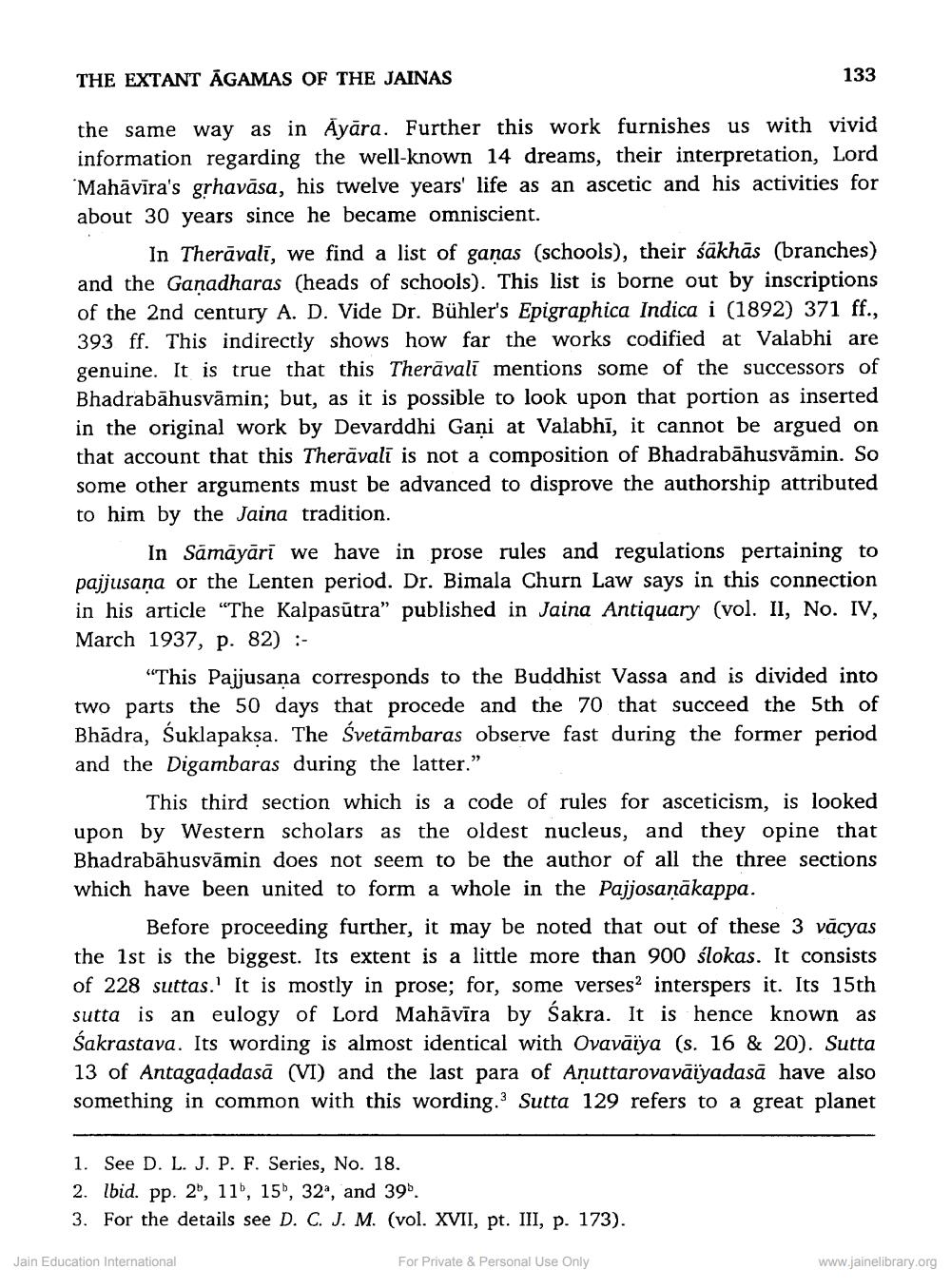________________
THE EXTANT AGAMAS OF THE JAINAS
the same way as in Ayära. Further this work furnishes us with vivid information regarding the well-known 14 dreams, their interpretation, Lord Mahavira's grhaväsa, his twelve years' life as an ascetic and his activities for about 30 years since he became omniscient.
In Theravali, we find a list of ganas (schools), their säkhäs (branches) and the Ganadharas (heads of schools). This list is borne out by inscriptions of the 2nd century A. D. Vide Dr. Bühler's Epigraphica Indica i (1892) 371 ff., 393 ff. This indirectly shows how far the works codified at Valabhi are genuine. It is true that this Theravali mentions some of the successors of Bhadrabähusvämin; but, as it is possible to look upon that portion as inserted. in the original work by Devarddhi Gani at Valabhī, it cannot be argued on that account that this Theravali is not a composition of Bhadrabähusvāmin. So some other arguments must be advanced to disprove the authorship attributed to him by the Jaina tradition.
133
In Sāmāyārī we have in prose rules and regulations pertaining to pajjusana or the Lenten period. Dr. Bimala Churn Law says in this connection in his article "The Kalpasūtra" published in Jaina Antiquary (vol. II, No. IV, March 1937, p. 82) :
"This Pajjusana corresponds to the Buddhist Vassa and is divided into two parts the 50 days that procede and the 70 that succeed the 5th of Bhadra, Śuklapakṣa. The Svetambaras observe fast during the former period and the Digambaras during the latter."
This third section which is a code of rules for asceticism, is looked upon by Western scholars as the oldest nucleus, and they opine that Bhadrabähusvämin does not seem to be the author of all the three sections which have been united to form a whole in the Pajjosaṇākappa.
Before proceeding further, it may be noted that out of these 3 vācyas the 1st is the biggest. Its extent is a little more than 900 slokas. It consists of 228 suttas.' It is mostly in prose; for, some verses? interspers it. Its 15th sutta is an eulogy of Lord Mahavira by Sakra. It is hence known as Śakrastava. Its wording is almost identical with Ovavaiya (s. 16 & 20). Sutta 13 of Antagaḍadasa (VI) and the last para of Aṇuttarovavaiyadasa have also something in common with this wording. Sutta 129 refers to a great planet
3
1. See D. L. J. P. F. Series, No. 18.
2. lbid. pp. 2, 11, 15, 32, and 39.
3. For the details see D. C. J. M. (vol. XVII, pt. III, p. 173).
Jain Education International
For Private & Personal Use Only
www.jainelibrary.org




